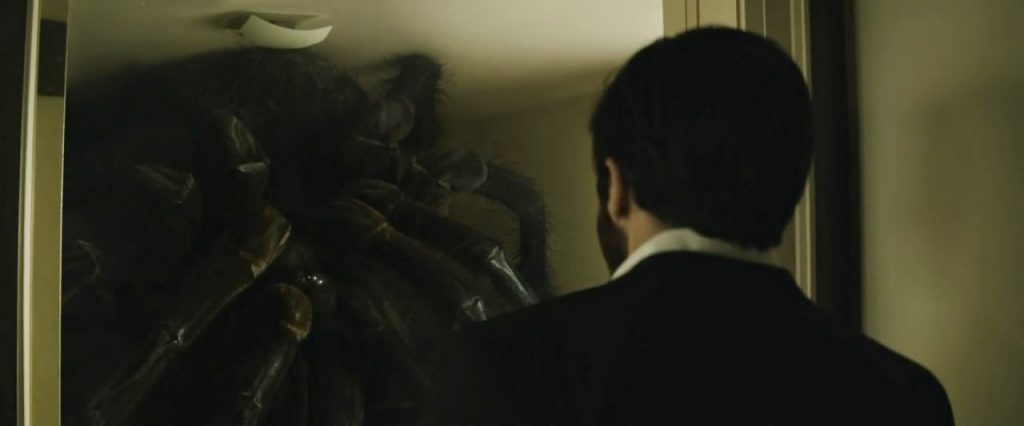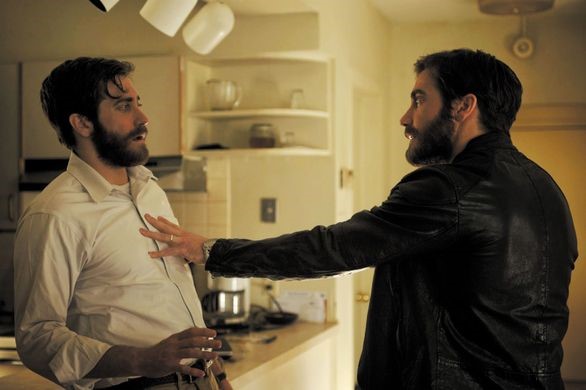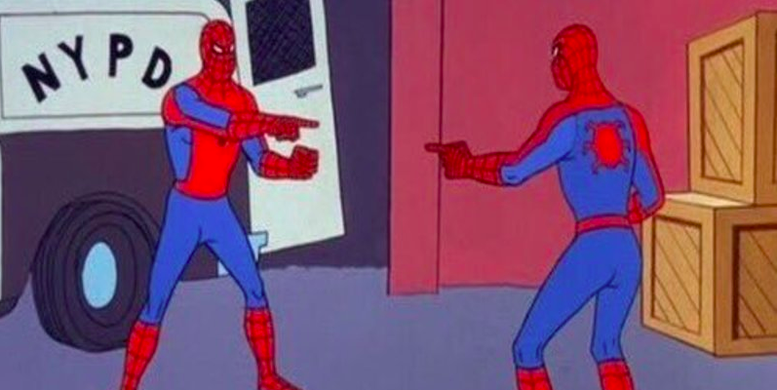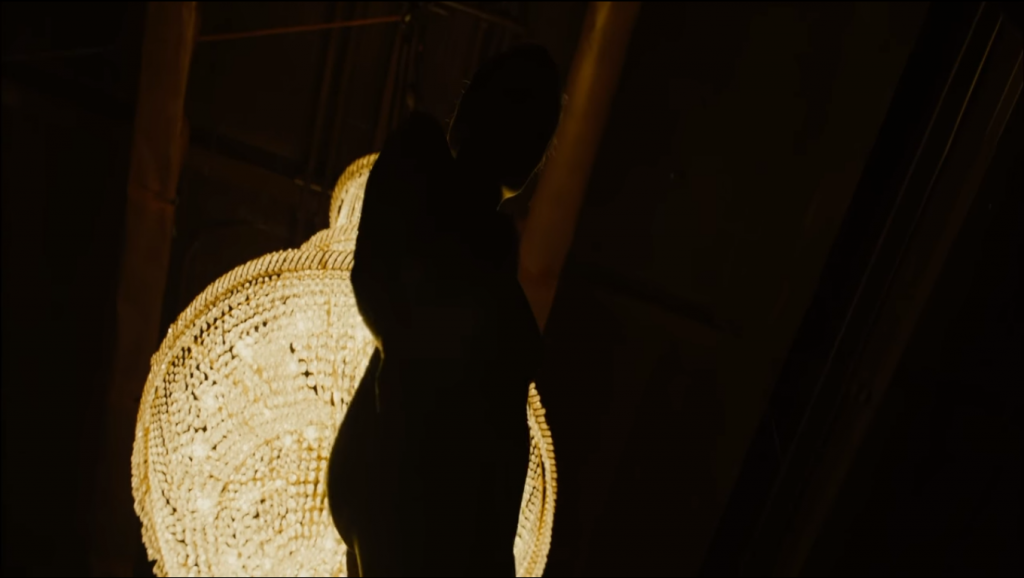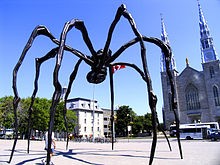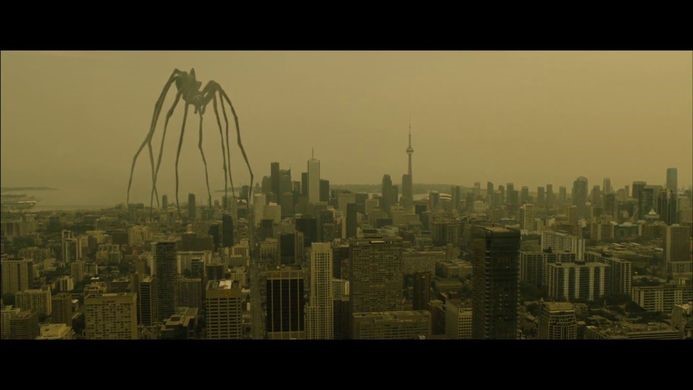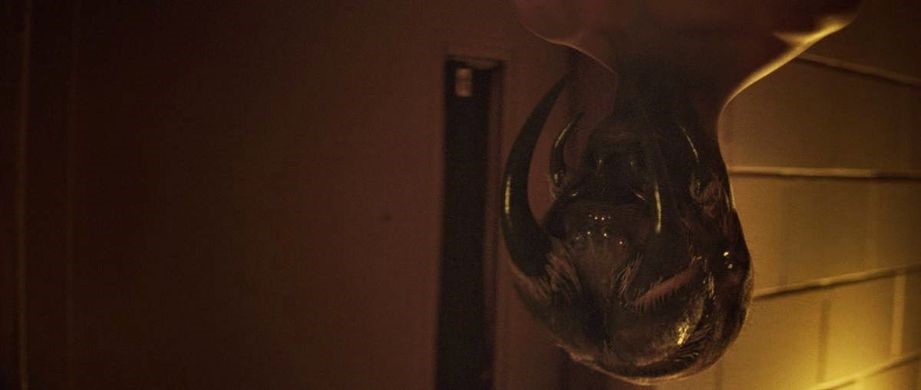Denis Villeneuve’s Enemy follows Adam, played by Jake Gyllenhaal, a history professor, disillusioned with life and suffering from a feeling of social malaise, and Anthony, played by Jake Gyllenhaal, a wannabe actor who regularly cheats on his pregnant wife. Adam sees Anthony as an extra in a movie and becomes obsessed with him. Anthony is eventually killed in a car accident and Adam takes over his life. Throughout the film Adam and Anthony are haunted by images of spiders, whether it’s a giant spider looming over the city which no one acknowledges, a spider killed under a woman’s heel at an erotic show or a spider web forming in the cracks of the window after Anthony’s crash. The only time one of these spiders is mentioned however is at the end of the film, when Anthony’s wife is replaced with a giant tarantula, which he looks at and sighs. When I watched the movie the first time this was… very confusing to say the least, upon a second viewing it made absolutely no sense, but after watching the film three times, I think I understand what director Denis Villeneuve was trying to say… I think.
The central plot of the movie is difficult to understand until you realise that Adam and Anthony are actually the same person, so we’ll call him Anthony from now on.
The problem is that this now makes the film even more confusing, and the spider thing is absolute nonsense still. The biggest clue comes from that final scene, when Anthony’s wife, Helen, becomes a tarantula. The spider is Helen… the spider is a woman… spiders are women. Or at least, they are how Anthony sees women. Finally! We’re getting somewhere.
So, if spiders are women, what does this tell us about the spiders? And why do they represent women? To understand this, we need to understand the struggle Anthony is going through. Anthony is a misogynist who cheats on his pregnant wife constantly, secretly goes to erotic shows behind her back and has a cold relationship with his mother, who he feels is overbearing. By the end of the film he has become what could be called a good person, he has resolved to stop cheating on his wife, and be a good father, signified by the death of Anthony as Adam now runs his life, until he finds a key to the sex show. Then he slips back to his old ways and sees his wife as a spider again. He sighs because he realises he hasn’t changed, and he’s stuck where he was before the whole film began. Anthony is terrified of the women in his life, he is scared of the commitment to his wife and scared of his over bearing mother. So, the spiders represent women because it is such a common fear for people. We can understand Anthony’s fear of his mother when she is represented by a giant spider looking across the city, with no escape from it, because that would be absolutely terrifying to us if we saw that too. Of course, we’re scared of his giant spider wife, but a woman in a towel wouldn’t affect us in the same way.
Women have a history of comparisons to animals, as Joan Dunayer notes in her essay, ‘Sexist Words, Speciesist Roots’, “Applying images of denigrated nonhuman species to women labels women inferior and available for abuse,”[1] By categorising women as spiders, Villeneuve taps into a tradition of dehumanising women but by framing the film from Anthony’s subjective point of view, he is able to use this history of sexism to showcase the sexist and outdated viewpoint of Anthony. By Anthony seeing women as spiders, the audience sees that he believes women are lesser, and so are “Available for abuse”. This is highlighted by the surreal opening scene wish shows Anthony watching a bizarre erotic show where a women squashes a spider under her heel. I believe this represents a few things, first of all Anthony sees himself as the spider, under the heel of what he sees as an oppressive matriarchy. Villeneuve’s framing make the spider appear small and weak, and the heel looms over it, a massive force, occupying most of the frame. The woman is shot from underneath, darkly lit so that you can’t make out her face, because she represents that oppressive matriarchy, a faceless feminine shape squashing Anthony, keeping him repressed. This is why he then sees women as the spider, he wants to reverse the roles, no longer does he want to be the spider, but instead to squash it, reduce the matriarchy of his own imagination to nothing.
The giant spider looming over the city I believe represents the mother. First of all, it bears a striking resemblance to this spider sculpture by Louise Bourgeois titled, ‘Maman’ or ‘Mother’. The sculpture contains 32 marble eggs in a sac under its abdomen. Of the many statues of spiders, she created Bourgeois said, “The Spider is an ode to my mother. She was my best friend. Like a spider, my mother was a weaver. My family was in the business of tapestry restoration, and my mother was in charge of the workshop. Like spiders, my mother was very clever. Spiders are friendly presences that eat mosquitoes. We know that mosquitoes spread diseases and are therefore unwanted. So, spiders are helpful and protective, just like my mother.”[2] The statue represents the strength her mother had, carrying her many eggs, or her children and the people in her life, standing tall with a striking presence but Villeneuve uses the same iconography to imply a more malicious intent. Secondly, in the scenes where Anthony talks to his mother she tries to offer guidance and advice, but this is misinterpreted by Anthony as her trying to manipulate him, force him into doing something he doesn’t want to do and instead bend to her will. By stretching across the entire city Villeneuve suggests that the mother’s reach is all encompassing, the eggs she holds no longer represent her nurturing nature but instead her inability to let her children escape her, she has to clutch them to her at all times. The city is constantly overcast in the shots with this spider, adding to the foreboding sense of dread created by the central, huge monster.
Another one of the spider monsters in the film is this woman:
Terrifying, I know. For context: She appears to Anthony in a dream, a woman with the head of a spider, walking on the ceiling above him. This acts as not only an indicator that his subconscious manifests women as spiders but her position above him shows how he perceives them as having power over him, but the surreal nature of the dream, how she is upside down and is a horrifying mix of woman and spider, shows the fear that he has for them. This bizarre scene is very confusing on an initial watch, which serves to make the audience sympathise with Anthony’s position in the film at this point, as he has no idea what is happening.
The final allusion to spiders in the film I think is significant is when Anthony dies in a car crash in the penultimate scene of the movie. The camera zooms in and focuses on a window of the car which has cracked. The death of Anthony implies that Adam has decided to give up on this aspect of his life and has decided to be faithful to his wife, but the appearance of the web implies something more sinister. The web is often associated with being tangled or trapped, as Anthony is trapped in this life, whether he thinks he can escape it or not, and the associations between spiders and webs is a further indication that Anthony is not as free from his delusions of spiders as it may appear he is. Which obviously pays off in the final scene of the movie as mentioned prior.
So, what does this say about spiders? Well every spider is used to further our understanding of Anthony’s psyche, more specifically to show us that he is terrified of women, the spider is a shorthand for scary, which is, evidently, a problematic view to have on an entire group of animals. Yes many people are afraid of spiders but to boil them all down to this one use disregards any other opinion an audience could have about them. Many people keep spiders as pets, specifically tarantulas, which are used at the end of this film to be the most shocking image, but this only works if you are afraid of the spider. By using a spider as an allegory for fear, Villeneuve implies a universality to the fear of spiders, reducing spiders’ value and implying that they are beneath humans, when we can see in this video, that spiders can in fact be cute. https://www.youtube.com/watch?v=ZoYVZmKSYFg
Villeneuve also uses a variety of different spiders in the film, from tarantulas to weird statuesque giant spiders. Again, this seems to be problematic because they are all used for the same purpose, to represent fear. So, it implies that all spiders are the same, that there is no important variation between the different species or the individual spiders.
The spiders are also used as a tool by Villeneuve to express something about the character of Anthony. They aren’t given any agency or purpose that is not directly involved with developing the character, again reducing spiders to be less that human, not only that but as subservient to humans, unless they are able to express something about the humans or else they have no value.
To conclude, Villeneuve uses spiders in Enemy to effectively communicate to the audience the fear Anthony feels about women and taps into the history of using animals as a representation of women to show the way in which Anthony disregards and mentally abuses the women in his life. The use of spiders as an allegory and the confusing plot force the audience to try to decipher the plot of the movie, and in doing so, stumble onto the deeper themes Villeneuve has presented so his use of spiders deepens the audience’s relationship to the film by forcing them to become active participants in the movie. But, by using the spiders in the way Villeneuve does he implies that they are less than human, tools for us to use and intrinsically the same across all species and types of spiders.
Bibliography
Adams, Carol J., and Josephine Donovan, Animals and Women: Feminist Theoretical Explorations, 2nd edn (Durham and London: Duke University Press, 1999), p. 11
“Tate Acquires Louise Bourgeois’s Giant Spider, Maman – Press Release | Tate”, Tate, 2008 <https://www.tate.org.uk/press/press-releases/tate-acquires-louise-bourgeoiss-giant-spider-maman> [Accessed 1 January 2019]
Further Reading
Animals in film – Jonathan Burt
Animals and Women: Feminist Theoretical Explorations – Carol J. Adams and Josephine Donovan
Women as Animals, Women as Objects: Evidence for Two Forms of Objectification – Kasey Lynn Morris
When Species Me(a)t: Overlappıng Stories of the Victimized Animals and Women in Ruth L. Ozeki’s My Year of Meats – Adem Balci
[1] Carol J. Adams and Josephine Donovan, Animals & Women: Feminist Theoretical Explorations, 2nd edn (Durham and London: Duke University Press, 1999), p. 11.
[2] “Tate Acquires Louise Bourgeois’s Giant Spider, Maman – Press Release | Tate”, Tate, 2008 <https://www.tate.org.uk/press/press-releases/tate-acquires-louise-bourgeoiss-giant-spider-maman> [Accessed 1 January 2019].
